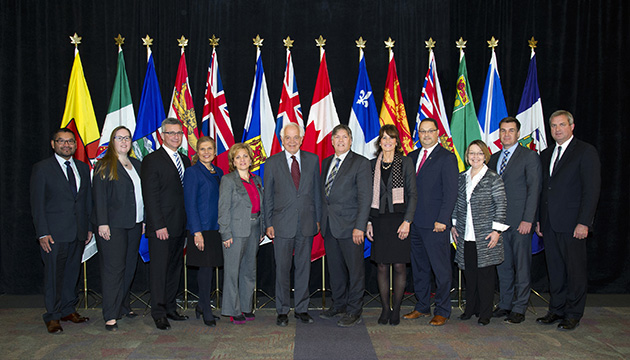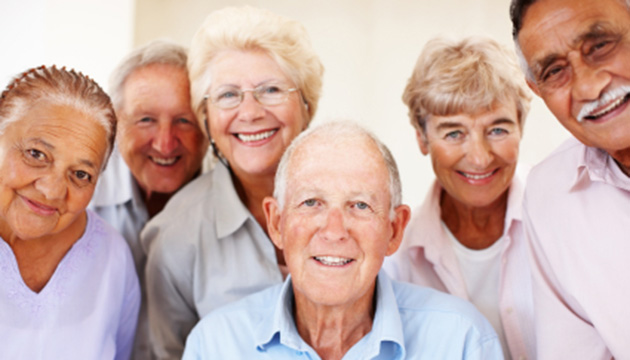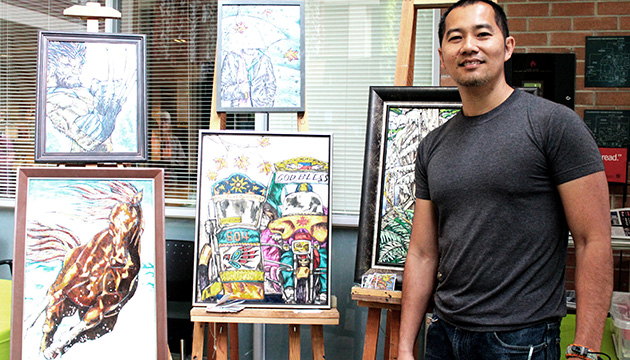January 16, 2024 (a 6-minute read) - Five public health concerns have been raised recently about the new and dominant COVID-19 JN.1 subvariant.
Is the Canadian public fully aware of them, namely:
- That the new COVID-19 JN.1 can become the leading coronavirus variant circulating the world in a matter of weeks from now?
- That amid the surging JN.1 in Canada are two other co-circulating respiratory viruses – the influenza virus (flu) and the respiratory syncytial virus (RSV) which, for the first time, also has vaccine available?
- That the rise in hospitalizations due to the three co-circulating respiratory viruses could again strain the healthcare system in the country and globally?
- That the COVID-19 updated vaccine has been available in Canada since last Fall and is also effective against JN.1?
- That the newly updated vaccines (Canada-approved formulations) not only avoid hospitalization and death but also reduce the risk of long-COVID-19 or COVID-induced heart attacks and strokes?
How far has JN.1 spread?
The World Health Organization (WHO) says Jn.1 has now travelled to more than 41 countries and can become the leading coronavirus variant circulating the world in a matter of weeks from now. This is portentous to think about amid the availability of safe and effective COVID-19 vaccines offered free to all Canadians.
Until late summer last year, JN.1 was barely detectable as the cause of the COVID cases. From a single-digit prevalence, it has become the new dominant COVID-19 subvariant as of early this month this New Year, accounting for more than half (52%) of the COVID cases in the country, and slightly for more in the US (62%) - close to two-thirds of the cases. The geographic proximity between the two countries of North America is cause for public health concern once more.
The very rapid pace of JN.1’s increase reminds us of the early years of the COVID-19 pandemic when waves of cases overcame the capacity of the healthcare system to cope. The huge human toll and extreme financial and economic distress Canada and the world endured, the long wait times experienced at the emergency rooms, the overcrowding and shortage of hospital beds and intensive care units – all these are healthcare scenarios we would rather not wish to witness once more.
Yet, the possibility exists. We have heard and read recent news reports from some provinces, my home province of Manitoba included. Staff shortages of healthcare workers are real; gratefully, the government appears sensitive and responds to the challenge by adding hospital beds and recruiting healthcare providers.
What the experts know about JN.1 strain
Considered the off-spring of the Omicron BA.2.86 variant, JN.1 has shown an additional mutation in its spike proteins – the parts which assist the virus to invade and bind to the patient’s cells and help them spread to others. Its growth has exceeded that of its parents, the BA.2.86 lineage, and it has developed its personality as a pathogen. That is, it is likely more transmissible and contagious than its parents, but not more severe than the other previous strains.
Because of its wider spread, we can expect it to reach more vulnerable older adults – with or without underlying medical conditions – and the very young, and those whose immune system is compromised. The spectrum of symptomatology it elicits appears unchanged from that of earlier variants.
Spectrum of symptoms and their value in differential diagnosis
How about JN.1’s symptoms when compared to those seen with RSV and Flu? Twelve symptoms constitute the spectrum of respiratory viral infections: loss of sense of taste or smell, headache, sore throat, runny nose, congestion, cough, shortness of breath or difficulty breathing, fever or chills, fatigue, muscle aches, nausea or vomiting, and diarrhea.
Astute clinicians have observed that the first two and the last underlined manifestations lean more toward a diagnosis of COVID-19. But when you experience any, some, or all of the 12 symptoms, the best approach to making the specific etiologic (identifying the specific germ) diagnosis is to do the home rapid antigen test.
Otherwise, it is nearly impossible to make a definitive clinical diagnosis because all three respiratory viruses – COVID, RSV and flu - are presently co-circulating in the community and all three can similarly present with any, some or all of the symptoms. Thus, your doctor will most likely tell you you may be coming down with COVID-19, flu, respiratory syncytial virus (RSV) infection or, remotely, the non-consequential common cold due to another common virus, the rhinovirus.
Why is it important to ascertain the causative virus
Identifying the specific viral agent responsible for the disease is essential to the selection of the correct medication, for three reasons: 1) anti-viral drugs against COVID and Flu are available; 2) these drugs must be taken by the patient within the first few days of the onset of infection to realize their full effectiveness; and 3) a rapid antigen test kit for COVID-19 is readily available and simple to do, with the results almost instantaneously known. Even if the tests had to be repeated for two or three days to ensure against earlier false-negative results, the eventual final results are still made soon enough to apply them in decision-making respecting the use of the specific antiviral medication.
When this type of situation confronts you, be sure to promptly call your family doctor if you belong to the high-risk vulnerable group: over 65 years of age, immuno-compromised condition, or with other pre-existing medical issues.
Another additional approach concerning the use of anti-viral drugs is to start using them before the test results are in since the disease can worsen quickly; treatment should not be delayed for test results.
Several family doctors have had pre-illness discussions with their patients about the treatment approach ahead of their illness. Indeed, it is highly recommended that families, especially those with vulnerable members, have a clear plan to access antivirals should they become sick and test positive for the disease.
Antivirals - let your doctor know you know these drugs exist
Antivirals are an important part of the treatment protocol for managing patients with COVID-19 and flu (none exists yet for RSV). They provide added protection: help prevent serious disease, reduce hospitalizations, and deaths among people at higher risk (at least 50 years of age, especially 65 and older, or have regardless of age certain underlying medical conditions such as a weakened immune system, heart disease, obesity, diabetes, or chronic lung disease) even if they have been previously vaccinated and the infection is a breakthrough.
These drugs have to be prescribed more often to save lives as well as to reduce the burden of disease on healthcare facilities and staff. Yet, it appears it is not common practice; hence, this reminder and, therefore, patients can promptly ask their medical doctor, “How about prescribing Paxlovid (against COVID-19) for me?” I am sure your doctor would appreciate a reminder; a good doctor would, I assure you.
Updated vaccines and JN.1 – the good and the sad news
The good news: .Fortunately, the updated COVID-19 vaccines recommended last Fall can protect against JN.1, that is, they protect against severe disease, hospitalization and death, and any breakthrough infection that may occur will be milder.
The sad news: However, uptake of the updated vaccine among the Canadian and U.S. populations has been low to date. Many Americans are unaware that a new COVID-19 vaccine with its new features has been available since Fall. I wonder whether the same situation is shared among Canadians.
How then to protect from JN.1 – what’s the best protocol to follow
What is the best protocol to follow to protect ourselves, our families and our neighbours against the co-circulating respiratory viral germs? The best advice from WHO is to use all available tools, to prevent and treat, viz:
- Stay up-to-date with COVID-19, influenza and RSV vaccines especially if at high risk
- Test if you have symptoms, or following exposure to someone with the disease
- Isolate if you have the disease; stay home if you are sick
- Avoid contact with sick people
- Practise respiratory etiquette - covering coughs and sneezes
- Keep a safe distance from others, as feasible
- Improve indoor ventilation to exchange indoor air for outdoor air: opening windows or doors regularly for a few minutes at a time; ensuring the HVAC system has clean, well-maintained air filters; using bathroom and kitchen exhaust fans that vent outside
- Mask in crowded, enclosed, or poorly ventilated areas.
- Clean your hands regularly with soap and water.
- For health workers in health facilities, universal masking when caring for suspected and confirmed COVID-19 patients is advised.
Indeed, be mindful of yourself and others. Meanwhile, immunization remains the best defence against the new and dominant COVID-19 JN.1 subvariant!














